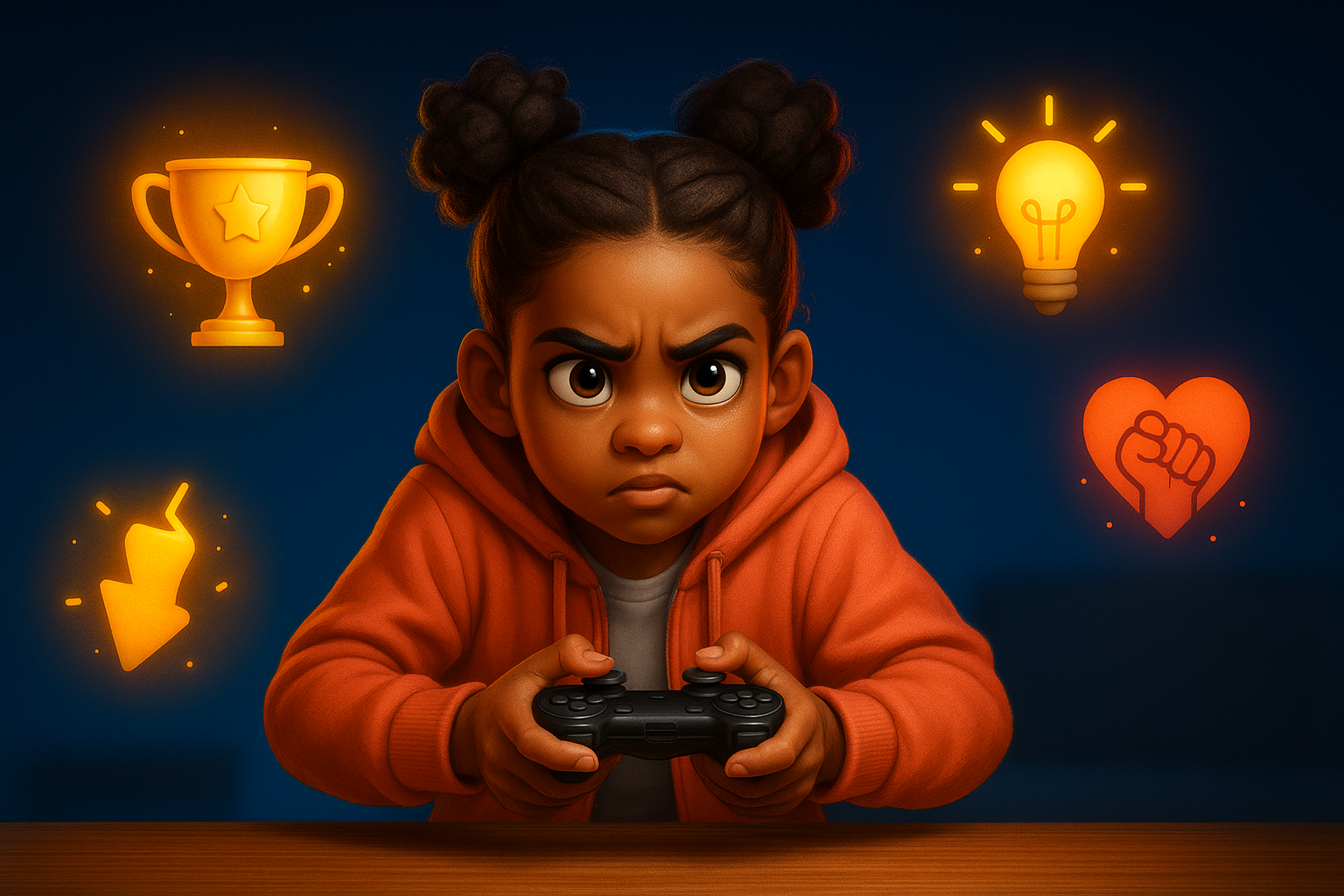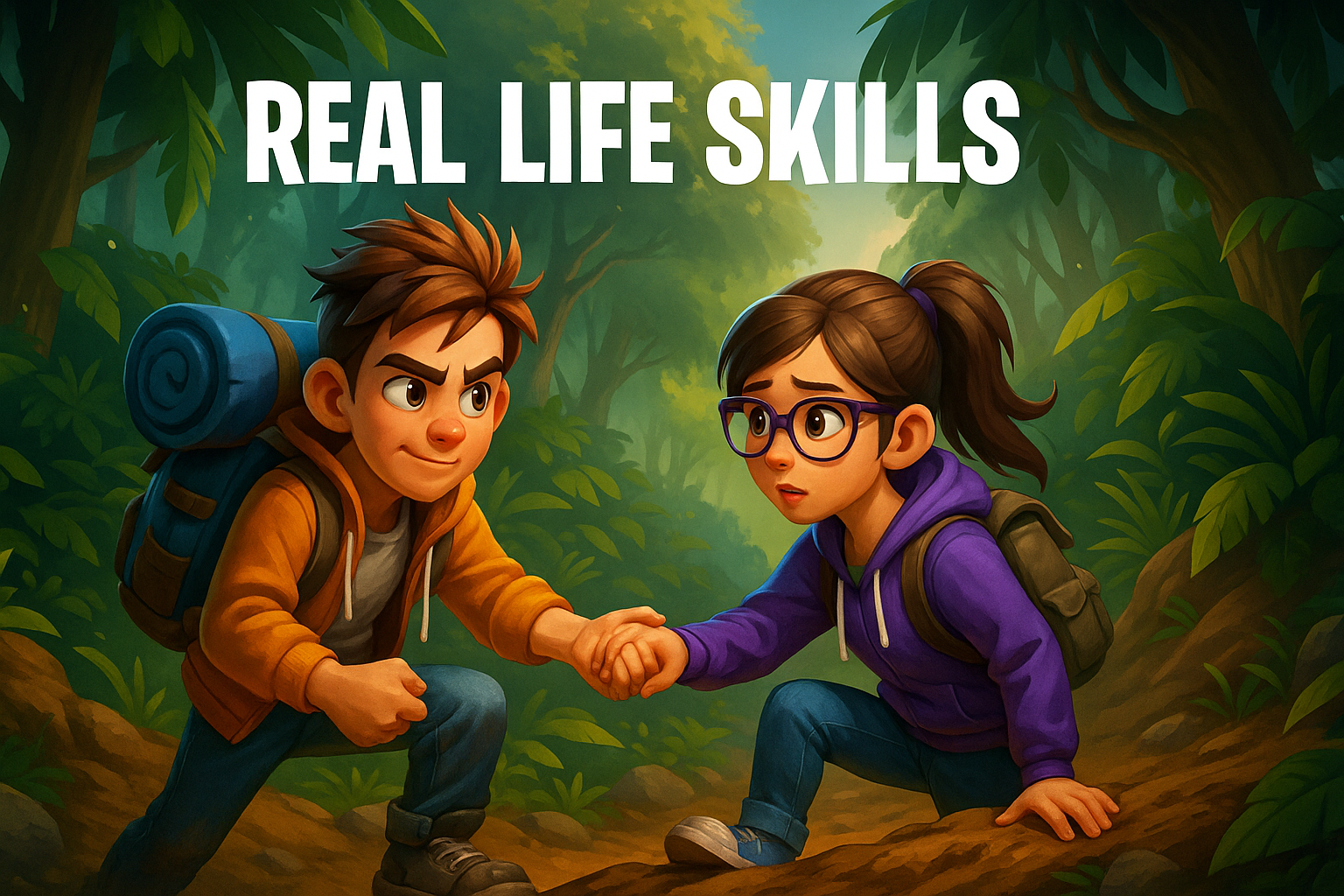April 23, 2025
Real Skills – Building Resilience and Coping Strategies
Beyond the flashy graphics and high scores, gaming can quietly teach kids how to cope with challenges and bounce back from setbacks. In the context of SEL, video games offer a safe training ground for resilience. Every time a player’s character “dies” or a mission fails, kids face immediate feedback and a choice to try again, cultivating a growth mindset. Rather than seeing failure as defeat, young gamers learn to “press restart” and approach the problem with a new strategy – an attitude that can carry over into school and life.
Perseverance & Grit:
Video games are effective tools to learn resilience in the face of failure
medindia.net
. Studies published by the American Psychological Association highlight that as kids cope with ongoing failures in games, they build emotional resilience they can rely on in everyday life. (medindia.net) For example, losing a tough boss battle might frustrate a child, but because the game encourages another attempt, they’ll adjust their tactic and try again. Over time, this cycle of failure and retry teaches them not to give up easily. Psychologists consider this bouncing back – not quitting after a setback – a positive skill, and gaming makes practicing it fun. Each “Game Over” is really an invitation to persevere and improve, fostering grit and determination. (boston.com)

Problem-Solving Under Pressure:
Games often put players in high-pressure scenarios – think of a timed puzzle or a close FIFA match – requiring them to stay calm and think critically. This helps children practice emotional coping strategies. Research shows that gaming can actually reduce stress responses: engaging in play lowers activity in the brain’s fight-or-flight center (the amygdala), which in turn lowers stress levels and improves emotion regulation
southwesthealth.org
. In other words, learning to keep cool during a tense Fortnite showdown can help kids learn to manage anxiety and pressure outside of gaming. They become better at thinking through challenges rather than panicking, a valuable coping skill. As they navigate complex game quests or puzzles, kids also hone creative problem-solving – analyzing what went wrong and finding a new approach – all while managing their nerves and staying focused.(greatergood.berkeley.edu)

Communication Skills & Friendships:
Confidence & Emotional Coping: Conquering a game challenge after numerous tries can give a huge boost to a child’s confidence. Achieving goals in games – whether it’s leveling up or completing a quest – creates a sense of accomplishment that promotes self-esteem and happiness. (southwesthealth.org) This is a healthy emotional payoff. Kids also learn to cope with the feelings of frustration or disappointment that come with failure. For instance, a player might take a short break to calm down after losing, then return with renewed focus – an important coping strategy. Over time, they realize that setbacks are temporary and effort leads to improvement. This mirrors the principles of resilience training used by child development experts: learning that failure isn’t final, but rather an opportunity to grow. By mastering challenges in a game, your child is gradually building real-world confidence and the emotional tools to handle difficulties in school and life

